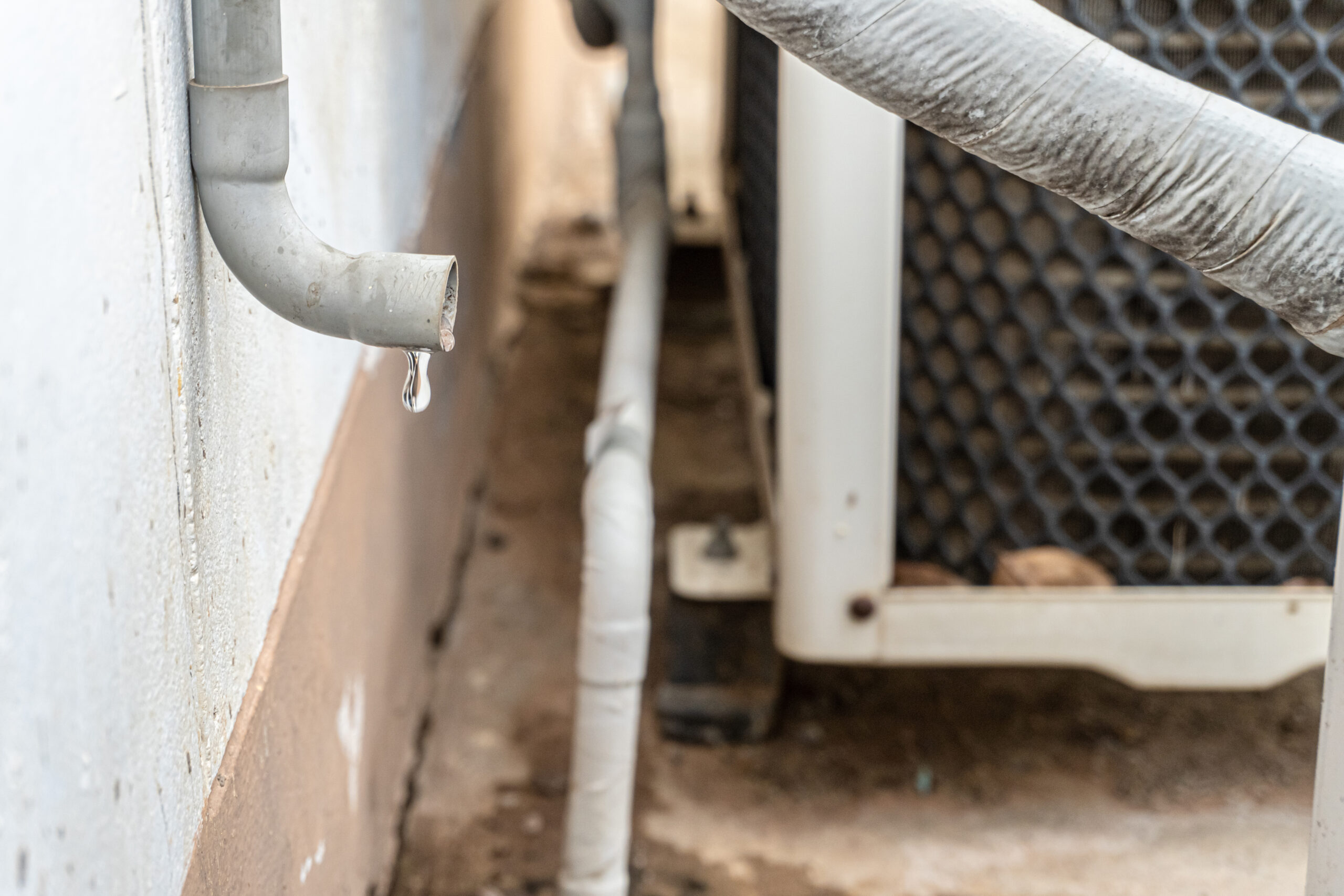During Florida’s humid summers, an air conditioner is crucial to your comfort and health. One of the ways you can ensure that your AC functions smoothly is to keep its drain line free of clogs. Detected and handled through regular maintenance, a clog removal can be a DIY project, although sometimes you’ll need professional service.
What is a Drain Line?
Your air conditioner controls humidity, condensing it into moisture that it releases through a drain line or condensate line. This line is a PVC or metal pipe that carries the accumulated moisture from the AC to the outside of your house. It keeps moisture from accumulating and damaging your insulation and ductwork.
Throughout the day, your air conditioner creates many gallons of liquid – sometimes as much as 20 gallons per day – which is caught in the drip pan under the air handler. From there it flows into the drain line and out of your house. A clog in the line can make the drip pan overflow. This can cause severe damage, sometimes even before the problem is detected.
What Are the Signs of a Clogged Drain Line?
Over time, debris, dirt, sludge, algae, and even dead bugs can cause a clog. Here are some signs that may indicate an obstruction.
- Thermostat goes blank and it has power and/or batteries.
- Your AC isn’t turning on – Air conditioners often come equipped with a that shuts the system down when the pan overflows. In most cases, the float switch turns off your air conditioner and prevents it from leaking.
- Full drain pan – When more water enters the system than it can drain, the pan fills.
- Water damage – Wet walls can signify a blocked condensate line. Your walls may be discolored or feel damp to the touch from seeping water.
- Standing water near the indoor unit.
How to Unclog Drain Lines Myself?
Yes, there are several DIY strategies you can use to try clearing the clog.
- Manually clear the blockage
Locate your drain line outside of your house. It’s a small pipe that will be located next to your outdoor unit. It’s typically made of white PVC or copper. Insert your fingers into it and remove any debris that you can reach.
- Use a wet/dry vacuum
If your drain pan is flooding and dripping, you can try using a wet/dry vacuum. Make sure the paper filter is removed and connect the vacuum’s hose to the drain line. After three minutes, disconnect the vacuum from the pipe. Repeat every six months to keep the drain line clear.
- Flush the drain line with vinegar
We don’t recommend flushing the line with bleach, because it can corrode your air conditioner’s copper pipes and ruin the cement that joins the fittings together. Vinegar, however, is safe and will do the job just as well.
First, turn off the air conditioner at the thermostat and the breaker. Next, remove the cap from the PVC tube’s access point. Use a funnel to slowly pour one cup of vinegar down the pipe. Wait 30 minutes and then rinse the line with warm water.
Optimally, this should be done every month.
How Do I Prevent Clogs in the Drain Line?
There are several things you can do proactively to avoid drain line clogs.
- Get an Annual AC Tune Up
We recommend you have your AC tuned up by a professional annually.
- Point drain lines in the proper direction & keep them clean.
Make sure the drain line is angled downward, and make sure it’s cleared of debris, mud, and grass.
- Regularly change the air filters
Changing your filters regularly is an easy preventative tactic to keep dust from accumulating on the evaporator coils and clogging your drain line. You can either use disposable filters which must be regularly replaced or washable, reusable filters which can last many years.
- Install a condensate trap
A condensate trap is a device that prevents air from escaping or entering your system’s pipes. It also blocks impurities from entering the air handler.
Contact Us
If you’ve encountered issues with your drain line and you’re unable to tackle them yourself, it may be time to contact the professionals at Progressive Air Systems. For 37 years, we’ve provided the Tampa Bay region with expert, reliable service. Call today, so we can help you keep your condensate line clean and clog-free.

